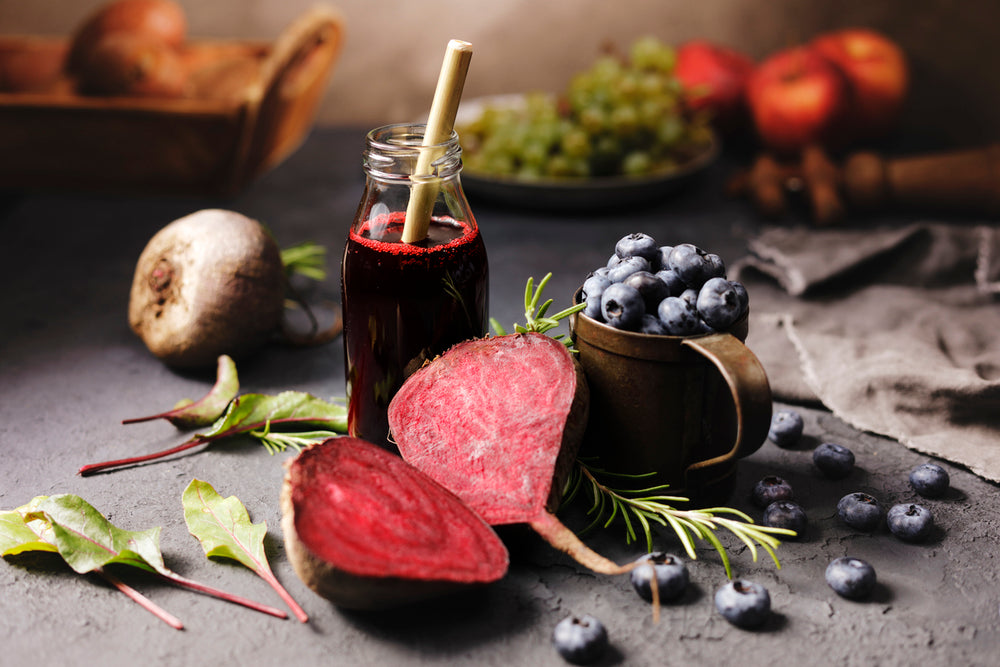Jam is a sweet memory for most of us, where we remember toppling a large spoon of it on our toast, scones, or other goodies. Fruits have a smaller shelf-life, and jams and preserves were a perfect way to prevent them from going to waste. Jams have been prepared and consumed for many centuries, and even today, this sweet condiment is popular among both children and adults.
History of Jams and Preserves

Methods for making jam have roots in the earliest known food preservation techniques, which date back to the Stone Age approximately 2.6 million years ago. People learned how to preserve food for storage during the Stone Age as it made it easier for them to survive when there was a food shortage.
One popular method of preservation uses honey or sugar. The Ancient Greeks used honey to preserve quince. Since honey has no moisture, it preserves any food that is enclosed in it, so syrups made from sugar and honey were also used to preserve certain fruits.
The first known cookbook which contains the first recorded recipe for jam is De Re Coquinaria (The Art of Cooking). It originates from Rome in the 4th century AD and is credited to Marcus Gavius Apicius. More than 500 recipes, many of which use Indian spices, are included in the book. There is also a recipe for soft fruit heated with honey. One of the earliest known forms of jam was made by cooling the mixture and storing it. This early variety of jam was frequently offered as a treat at the end of a meal.
Popular Jams and Preserves
The British enjoy their jams and preserves with sandwiches, desserts, and other baked treats. Here is a list of some of the most loved jams and preserves in the UK:
Blackcurrant Jam

Blackcurrants are rich in Vitamin C and have a grape-like but strong tart flavour. The fruit grows in small bunches in the summers and can be eaten raw, too. However, the British like to make jam out of them, and when cooked, it has a beautiful dark purple colour. Just blackcurrants and sugar are used in making the jam, which can be stored for 4 to 5 months in a refrigerator and up to 1 year if kept in a cool and dark place such as a cellar. While the recipe is simple and most prefer making it at home, Hartleys, Dana, and Stute are some known brands if you want to buy it from the market.
Strawberry Jam
Strawberry jam is a staple on an English breakfast table, along with clotted cream and scones. Strawberries are grown on farms throughout the UK, and almost every home with a garden grows them. They are harvested between the months of June and September. While there are many different recipes for making strawberry jam, the most common one requires equal quantities of strawberries and sugar cooked together till a desired consistency is achieved. While the homemade strawberry jam is delicious, brands like Bonne Maman, TipTree Conserve, and Dana make delicious strawberry jams and preserves.
Raspberry Jam

Raspberry jam is one of the most loved accompaniments for bakery goods in Britain. Raspberries are small, round, velvety red, and sometimes yellowish fruits that wildly grow all over Europe. It has a bittersweet flavour and is very aromatic. The best season to buy fresh and best-tasting raspberries for making jam is between June and August. Raspberry jam is mostly used to spread on toast, and scones along with cream to fill sponge cakes, mini tarts, and drizzle over puddings and ice-creams. Hartleys and Bonne Maman produce good quality raspberry jam.
Apricot Jam
Apricots are small fruits with a seed. They resemble peaches but are smaller in size. They can be light orange to dark orange in colour, often with a hint of red blush. The season for apricots in Britain is between May and September. Both jam and preserve can be made from apricots. Bakers love to use apricot jam as a filling for their cakes. They also use it for topping danish deserts and in pies. The British also love to use apricot jam to coat fish or meat for a nice sweet glaze.
Blackberry Jam
Blackberries are small black fruits that grow wildly in many regions. A bunch of very tiny fruits make up one fruit – they are juicy, sweet, and sometimes tangy. August and September are the best times to purchase and make blackberry jam. The British love to smother their toast with blackberry jam spread on their scones or add it to flavour their yogurt and rice pudding. Once cooked, the jam has a very beautiful deep purplish-black colour.
Damson Jam

Damsons are small oval fruits that are purple or blue-black in colour. It has a strong sour flavour that is similar to a plum. They are quite juicy and have a soft pulp, but people avoid eating them raw because they are too tart. It is a late summer fruit, and the British use the jam mostly as spread for their toast or scones.
Gooseberry Jam
Gooseberries grow in small spiny bushes, and they are greenish-yellowish in colour. Some fruits may also be red or white. They are harvested in the months of July and August, and this is also the best time to make jam or preserves from the fruit. There are so many dishes in which gooseberry jam or preserves can be used, such as gooseberry cheesecake or pie. Soemtimes it is served with ice cream for a unique flavoured dessert.
Jams and preserves are an important part of the people as they are used in daily lives. From using them as a spread for their toast to piping them in hot donuts, the taste of this fruity delight will never grow old.


 Christmas 2025
Christmas 2025
 Frozen Food
Frozen Food
 Baking
Baking
 Beans, Peas, Soups & Tins
Beans, Peas, Soups & Tins
 Biscuits, Crackers & Cookies
Biscuits, Crackers & Cookies
 Candy / Sweets
Candy / Sweets
 Crisps & Snacks
Crisps & Snacks
 Chemist / Pharmacy
Chemist / Pharmacy
 Desserts
Desserts
 Gravy, Stock & Paste
Gravy, Stock & Paste
 Haggis
Haggis
 Indian Sauces, Paste and Pickle
Indian Sauces, Paste and Pickle
 Jams & Preserves
Jams & Preserves
 Poppy Appeal
Poppy Appeal
 Pot Noodles & Super Noodles
Pot Noodles & Super Noodles
 Scone Mix
Scone Mix
 Gluten-Free / Free From
Gluten-Free / Free From
 Tea Accessories
Tea Accessories
 Teapot & Tea sets
Teapot & Tea sets
 Tea For One
Tea For One
 Sugar & Creamer
Sugar & Creamer
 Tableware
Tableware
 Serveware
Serveware
 Plates & Trays
Plates & Trays
 Bowls
Bowls
 Cups & Saucers
Cups & Saucers
 Mugs
Mugs
 Silverware
Silverware
 Dinnerware - Accessories
Dinnerware - Accessories
 Dinnerware - For Pets
Dinnerware - For Pets
 Victoria Eggs - Hand-Drawn UK Homeware
Victoria Eggs - Hand-Drawn UK Homeware
 Jewelry & Accessories
Jewelry & Accessories
 Sale
Sale
 Christmas Gifts
Christmas Gifts

